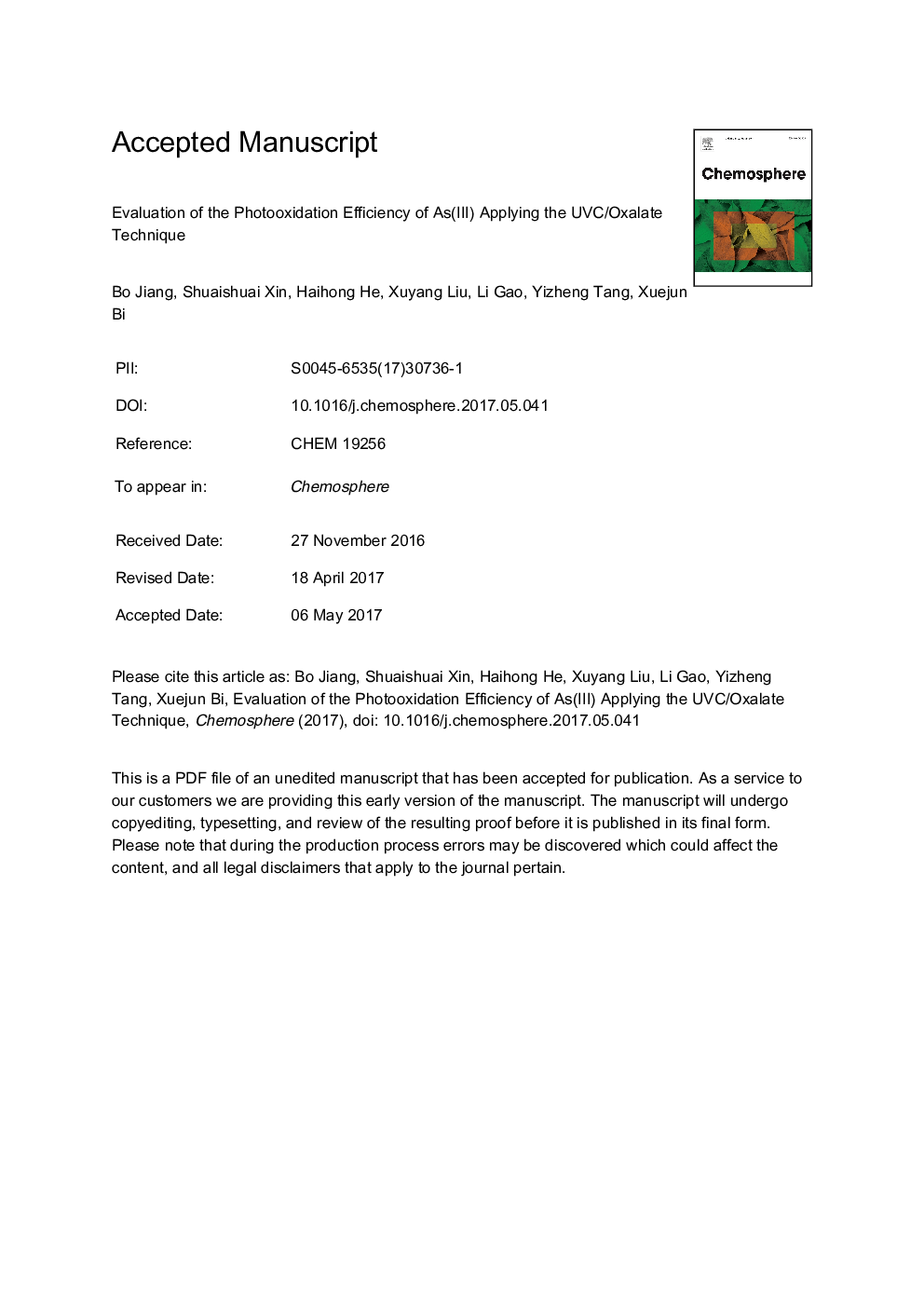| Article ID | Journal | Published Year | Pages | File Type |
|---|---|---|---|---|
| 5746951 | Chemosphere | 2017 | 26 Pages |
Abstract
In this study, the photooxidation capacity of UVC/Oxalate (Ox) was evaluated using As(III) as a typical pollutant. The results show that the direct oxidation amount of As(III) induced by UVC in water was negligible, but the presence of Ox remarkably accelerated the oxidation rate of As(III). Under UVC irradiation, 50 μM As(III) can be completely oxidized to As(V) in the case of Ox concentration above 300 μM within 60 min. As(III) oxidation was found greatly related with the photodecomposition of Ox. Much more Ox can be mineralized in more acidic solution. At the same time, the photooxidation of As(III) was significantly favored at decreased initial pH from 8.0 to 3.0. In this reaction system, the role of oxygen was indispensable for Ox photodecomposition and As(III) photooxidation, which can be ascribed to its special roles as a precursor of reactive superoxide and an electron acceptor. In oxygen-present atmosphere, the in situ production of H2O2 was detected during the photolysis of Ox and its photolysis product, i.e., OH primarily contributed to the oxidation of As(III). However, the photodecomposition of Ox and photooxidation of As(III) were significantly inhibited in the anaerobic environment. In general, the homogeneous photolysis of Ox in many commonly practiced UVC oxidation processes can be also proposed as a supplementary method of generating highly oxiditive species in aerobic condition.
Related Topics
Life Sciences
Environmental Science
Environmental Chemistry
Authors
Bo Jiang, Shuaishuai Xin, Haihong He, Xuyang Liu, Li Gao, Yizheng Tang, Xuejun Bi,
